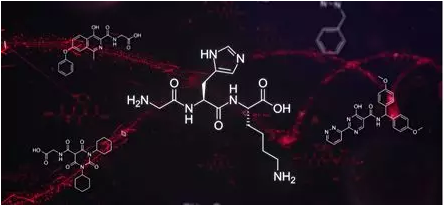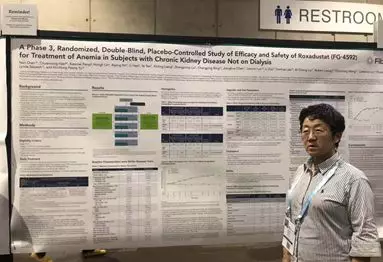From the Lasker Award to China's first HIF mechanism to revolutionize renal anemia treatment
March 12, 2019 Source: New Perspectives in Medicine
Window._bd_share_config={ "common":{ "bdSnsKey":{ },"bdText":"","bdMini":"2","bdMiniList":false,"bdPic":"","bdStyle":" 0","bdSize":"16"},"share":{ }};with(document)0[(getElementsByTagName('head')[0]||body).appendChild(createElement('script')) .src='http://bdimg.share.baidu.com/static/api/js/share.js?v=89860593.js?cdnversion='+~(-new Date()/36e5)]; Over the past two decades, the development of human genetics, genomics, and bioinformatics has laid the foundation for the development of innovative therapies, and modern medical research has achieved an unprecedented leap. More and more disease treatments are beginning to change the traditional way of external intervention, and instead research to modulate the disease by mobilizing the body's mechanisms.
In many fields of research, the oxygen regulation mechanism in the human body has always been the focus of scientists. How do cells and tissues in the body regulate and adapt to changes in oxygen levels? Until the 1990s, the HIF (low oxygen induction factor) pathway was discovered and the puzzle was unraveled.
How is the innovative HIF mechanism discovered?
In 1992, American scientist Gregg Semenza first discovered in animal cells a protein that increases erythropoietin (EPO) transcription under hypoxic conditions, HIF-1, and the intrinsic oxygen regulation mechanism of animal cells, HIF, first entered human vision. In 2002, the team of American scientist William Kaelin and British scientist Peter Ratcliff discovered that prolyl hydroxylase (PHD) regulates the activity and stability of HIF and is a "switch" to open the HIF pathway.
The study found that HIF-1 is mainly composed of two subunits, HIF-1α and HIF-1β. Under normal oxygen conditions, HIF-1α is hydroxylated by PHD and is degraded by the ubiquitin-protease hydrolysis complex. Under hypoxic conditions, PHD is inhibited and HIF-1 is stably expressed, which in turn exerts its role in regulating the transcription of multiple genes.
The discovery of the new HIF mechanism not only helps scientists to understand the internal mechanisms of the body, but also provides new ideas for the treatment of many disease areas such as anemia, cardiovascular disease and cancer. In 2016, Gregg Semenza, William Kaelin and Peter Ratcliff also won the Lasker Basic Medicine Award for discovering the HIF pathway.

â–²From left to right: Professor Gregg L. Semenza, Professor William G. Kaelin, Professor Jr. and Professor Peter J. Ratcliffe (Source: laskerfoundation.org)
The first breakthrough in the clinical application of HIF mechanism: The mechanism of renal anemia treatment of HIF has been discovered, how to apply HIF mechanism to clinical medicine immediately becomes a new field worth exploring. Among them, Dr. Lin Yue, one of the founders of the HIF-prolyl hydroxylase research platform, and his team spent many years researching the application of HIF-PHD and its inhibitors, and finally found the answer in the anemia test: "We When doing blood tests, I also thought of doing anemia test. In the middle of the experiment, the color of the white mouse is white, and gradually its skin begins to turn red, the white is red and the red is more red, and the high dose is redder. I know that there is a result."
The hypoxia-inducible factor prolyl hydroxylase inhibitor (HIF-PHI) mimics the physiological state of the human body, activates the HIF pathway by inhibiting PHD, stimulates the liver to synthesize EPO, and increases iron by inhibiting hepcidin. Absorption and utilization, this feature is of great significance for the correction of anemia in patients with chronic kidney disease (CKD), which also inspired researchers to treat renal anemia as an important breakthrough in the clinical application of HIF.

â–²HIF-PHI molecular formula
30 years of no innovative therapy, renal anemia treatment compliance rate is low <br> Renal anemia is one of the common complications of CKD patients, mainly due to the relative or absolute deficiency of EPO due to renal function decline and iron metabolism disorders. According to the survey, the average rate of anemia treatment in Chinese dialysis patients is only 21.3%. Traditional treatments for renal anemia include external methods such as injection of erythropoietin, iron supplementation, and blood transfusion, but these treatments have limitations.
For the reasons for the low compliance rate of traditional treatments, Professor Sun Shiren of Xijing Hospital of Air Force Military Medical University explained that due to the complex etiology of renal anemia, the mechanism is not limited to EPO deficiency, but also affected by many other factors, such as inflammation and iron absorption. . The existing treatment options have certain limitations, and there are also medication safety considerations in clinical use. Therefore, to break through the limitations of existing therapeutic drugs, it is necessary to develop new mechanisms of therapeutic drugs.

â–²Professor Lin Shanzhen
Professor Lin Shanlu from Huashan Hospital affiliated to Fudan University pointed out that the initiation of hypoxia-inducible factor can correct CKD anemia and alleviate the degree of disease in animal models of various kidney diseases. The research on hypoxia-inducible factors and the development of target drugs have great prospects in the treatment of kidney diseases.
HIF-PHI has significant clinical advantages and is innovative in the treatment of renal anemia. Currently, HIF-PHI drugs based on HIF mechanism have entered clinical trials. Among them, Rossa was the first to complete clinical trials in China and was approved for the treatment of renal anemia in patients with chronic kidney disease dialysis, becoming the world's first approved HIF-based innovative drug.
In the interpretation of the rostastat clinical trial, Professor Chen Nan of Ruijin Hospital affiliated to Shanghai Jiaotong University School of Medicine introduced that Rostaxa can increase hemoglobin (Hb) steadily for both dialysis and non-dialysis patients, and the effectiveness is not affected by inflammatory conditions. Reduces the level of hepcidin and is well tolerated, effectively and safely correcting anemia. At the same time, Rossa's oral treatment to alleviate the pain of treatment will help improve patient compliance.

â–² Professor Chen Nan shared the clinical results of Rostastat China Phase 3 at the 2018 American Kidney Society (ASN) Kidney Disease Week
The successful application of HIF-PHI drugs in the clinical treatment of renal anemia has brought more possibilities for the application of HIF mechanism in other diseases. Some studies have reported that HIF-PHI may benefit other disease areas such as ischemia and hypoxia, infection, wound healing, inflammation, inflammatory diseases and atherosclerosis. In addition, Professor Lin Shanlu said that the HIF mechanism still has a lot of clinical potential, such as lowering blood lipids and cholesterol, treatment of diabetes and recovery of kidney function after acute major surgery. These are all directions that can be expected.
Original title: From the Lasker Award to China's premiere, this new drug revolutionizes kidney disease treatment
We're Professional Supplier Extract Powder manufacturers and suppliers in China specialized in providing high-quality products at low price. We warmly welcome you to buy or wholesale bulk Supplier Extract Powder for sale here from our factory. For a free sample, contact us now.
Supplier Extract Powder,Supplier Extract ,Supplier Powder Manufacturer in China
Shaanxi Kang New Pharmaceutical co., Ltd. , https://www.kangnewpharmas.com